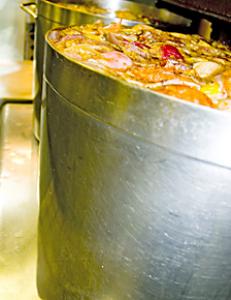tags (edit): Slow cook Roast Fry Info @Vogel @Try Soon! EGullet Soup
tags (edit): Slow cook Roast Fry Info @Vogel @Try Soon! EGullet Soup
|
Thoughts on stock and stock-making from up-and-coming Toronto chefs. From an article by Ivy Knight (http://www.canadapfl.com/figher_bios/vic_payback.html) on eGullet.ORG (http://forums.egullet.org/index.php?showtopic=100936). Ingredients
See link for entire article & comments |
 |
Instructions

|
Cuisine: Info |
Main Ingredient: Info |